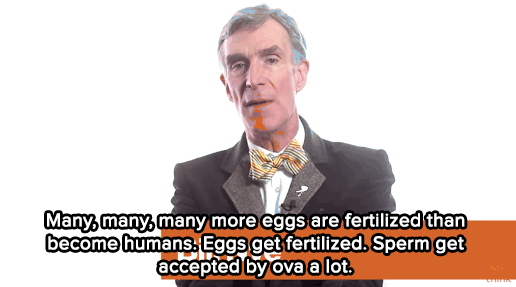Crime Scene Investigators Are About To Get A Helping Hand From Our Ancient Ancestors. The Earliest Known

Crime scene investigators are about to get a helping hand from our ancient ancestors. The earliest known synthetic pigment, Egyptian blue, is found in some of the paint on ancient statues, coffins, tomb walls, and amulets. Most other pigments long ago faded. Modern scientists, intrigued by its longevity, worked out Egyptian blue’s chemical composition decades ago. Recently it was discovered that it emits near-infrared radiation when exposed to certain kinds of light. Basically: it has rare, invisible luminescence.
And why does that help crime-stoppers? Egyptian blue can be dusted onto complicated surfaces where fingerprints are normally hard to retrieve. The surface is then photographed with a modified camera and a filter sensitive to Egyptian blue’s near-infrared rays. If fingerprints are there, they glow clearly in the resulting image. Science is amazing.
More Posts from Theperpetualscholar and Others
man it’s so wild to me that the greeks literally thought that a large number of women’s ailments were caused by their wombs (which they believed to be a weird animalistic thing living in women’s bodies) just picking up and migrating all over the place (fun fact, the word hysteria comes from this nonsense), and while that’s horribly misogynistic and terrible i can’t say i wouldn’t milk that shit for all it’s worth if i lived in ancient greece
like, gotta go harvest the crops? sorry dude, womb’s all up in my arms, can’t do anything about it
want me to weave something? love to but the ol womb’s at it again, you know how it is
got caught making out with the neighbor’s wife? haha man that womb of mine sure is a riot

The Boy Who Grew a Brain
Noah Wall was born with only 2% of a brain (left), spina bifida and severe hydrocephalus. Doctors predicted that even if he survived, he would suffer severe mental disability and have limited mobility for the rest of his life.
After surviving his birth, Noah only improved with time. His parents worked with him to learn and grow to live as normal a life as possible, and doctors were stunned with the progress he was making. After 3 years, Noah was scanned again and the results showed his brain had grown to over 80% the size of a normal, healthy brain (right). Noah continues to live a happy life and progress even more, and his unusual case sheds light on the incredible capabilities of the human body and brain.
For anyone interested in learning more about this case, there is a great documentary made by Channel 5 (UK) in the Extraordinary People series about Noah (The Boy With No Brain). For those of you outside the UK the doc is also available on Youtube.


Image Source: Japan Life Science Databases(LSDB), Anatomography. Vomer bone from Anatomography maintained by Life Science Databases(LSDB). Wikimedia Commons.
Vomer: A small, thin bone that separates the left and right nasal cavities in humans. The vomer is located entirely on the sagittal plane.
States of Decay: Visiting the World's Largest Body Farm [Graphic Content]


[View on Google Maps] [View on YouTube]
In a field northwest of San Marcos, Texas, fifty human bodies lie exposed to the elements, each in a different stage of decomposition.
Some are fully mummified, their flesh dried out by the harsh Texas sun. Others have been picked over so voraciously by vultures that their bones are frayed. The most lurid are the fresh ones: week-old bodies that have ballooned to twice their normal size and crawl with thousands of maggots.
This is Freeman Ranch, part of the Forensic Anthropology Center at Texas State University—otherwise known as the world’s largest body farm. By observing bodily decay under varying conditions, researchers hope to help law enforcement better estimate time of death in criminal investigations.
[via: Vox]





The Field Museum’s Economic Botany collection contains everything from a seed bank (literally vials upon vials of organized seeds), to hats made out of various grasses and straw material, musical instruments and shoes made from certain trees and barks, stalks of wheat, cobs of corn, bags of tea, dyes, medicines. Some of the items are decades old, and a large portion date back to the 1893 World’s Fair, when the trade and sale of such products was essential to industry growth.
This is a collection about the relationship between people and plants, documenting our use and interactions with items we’ve grown and harvested. It’s botanical as much as it is anthropological: the variety of uses for plants that people have discovered and created over thousands of years is staggering and astounding. As we continue to move towards automated agriculture and become less removed from the direct sources for our food and raw materials, I am grateful and intrigued that we may look into a jar of cherry syrup from the 1890′s and gain a bit more knowledge about the way we used to live.
Pictures:
A jar of cherry syrup from Guyana, 1893
A variety of pasta products, presented by the National Macaroni Association, 1920′s
Tortillas from Mexico, 1901
Sugars from Egypt, 1904
Maize from Brazil, 1948-1949
See more about the Economic Botanical Collection on The Brain Scoop!
So how bad is Guns, germs, and Steel? Is it still worth reading or do people consider it bunk/ too pop history.
It is a garbage book. Diamond tries to answer difficult questions, but in doing so simplifies issues and topics to the point of being wrong. This is compounded by his use of out of date information and poor understanding of topics within anthropology. Fans of his book like to say it is just sour grapes among academics, but his fans are the same sort of people who think colonialism was justified and that we no longer need to do anything for contemporary Native peoples.Instead, I recommend reading 1491 by Charles Mann. He presents a lot of information, much of it very new and groundbreaking at the time of its publication in 2006. It is a favorite among academics to assign to their intro classes because Mann does not try and interpret research to fit a narrative like Diamond does. His sequel, 1493, is equally great with his discussion on the effects of the the Columbian Exchange. My favorite topics are the spread of the potato to Europe, the lack of European use of Native agricultural practices for cultivating the potato, and the resulting potato famines as a result of using New World guano as fertilizer which introduced a fungus that killed the potato. The effects of the famines were compounded by the use of European agricultural practices for the potato which greatly increased the spread of the fungus. If they had used Andean potato cultivation practices the potato famines may not have been so severe. My other favorite topic is how all the silver wealth extracted by Spain fro the New World initially made them rich, but the continued introduction of silver quickly caused a financial crisis with rampant inflation. Spain’s response was to use more silver. All this silver made its way to China which destabilized China’s economy and left it open for later colonization efforts.

Found on reddit (the thread has some more good ones)










-
 huinebearapo liked this · 1 year ago
huinebearapo liked this · 1 year ago -
 lycocarpum reblogged this · 1 year ago
lycocarpum reblogged this · 1 year ago -
 tatterdemallionsails liked this · 1 year ago
tatterdemallionsails liked this · 1 year ago -
 caranthira reblogged this · 2 years ago
caranthira reblogged this · 2 years ago -
 automationsorceress reblogged this · 2 years ago
automationsorceress reblogged this · 2 years ago -
 izzycrust liked this · 2 years ago
izzycrust liked this · 2 years ago -
 3pblueberry reblogged this · 2 years ago
3pblueberry reblogged this · 2 years ago -
 sweet-soul-brotha reblogged this · 2 years ago
sweet-soul-brotha reblogged this · 2 years ago -
 sweet-soul-brotha liked this · 2 years ago
sweet-soul-brotha liked this · 2 years ago -
 kiwiwunderbar reblogged this · 2 years ago
kiwiwunderbar reblogged this · 2 years ago -
 kiwiwunderbar liked this · 2 years ago
kiwiwunderbar liked this · 2 years ago -
 torreybv liked this · 2 years ago
torreybv liked this · 2 years ago -
 captainsnickerdoodle reblogged this · 2 years ago
captainsnickerdoodle reblogged this · 2 years ago -
 captainsnickerdoodle liked this · 2 years ago
captainsnickerdoodle liked this · 2 years ago -
 myteetharewhitewithsin liked this · 2 years ago
myteetharewhitewithsin liked this · 2 years ago -
 mrboomybeloved liked this · 2 years ago
mrboomybeloved liked this · 2 years ago -
 biblicallyinnacurate reblogged this · 2 years ago
biblicallyinnacurate reblogged this · 2 years ago -
 biblicallyinnacurate liked this · 2 years ago
biblicallyinnacurate liked this · 2 years ago -
 nonbinarygrimwalker liked this · 2 years ago
nonbinarygrimwalker liked this · 2 years ago -
 reixelfo liked this · 2 years ago
reixelfo liked this · 2 years ago -
 raspberry-jazz liked this · 2 years ago
raspberry-jazz liked this · 2 years ago -
 imbalanceofhumors reblogged this · 2 years ago
imbalanceofhumors reblogged this · 2 years ago -
 lycocarpum liked this · 2 years ago
lycocarpum liked this · 2 years ago -
 imbalanceofhumors liked this · 2 years ago
imbalanceofhumors liked this · 2 years ago -
 tellemboybi liked this · 2 years ago
tellemboybi liked this · 2 years ago -
 itsalwaysanotherdungeon liked this · 2 years ago
itsalwaysanotherdungeon liked this · 2 years ago -
 theymademe-dontshoot liked this · 2 years ago
theymademe-dontshoot liked this · 2 years ago -
 probably-ghostly liked this · 2 years ago
probably-ghostly liked this · 2 years ago -
 wrongerasara liked this · 2 years ago
wrongerasara liked this · 2 years ago -
 kiiingsnake liked this · 2 years ago
kiiingsnake liked this · 2 years ago -
 knightowlet liked this · 2 years ago
knightowlet liked this · 2 years ago -
 purple-dinosaur-rex liked this · 2 years ago
purple-dinosaur-rex liked this · 2 years ago -
 spontaneousmusicalnumber reblogged this · 2 years ago
spontaneousmusicalnumber reblogged this · 2 years ago -
 analisam05 liked this · 2 years ago
analisam05 liked this · 2 years ago -
 htmelle reblogged this · 2 years ago
htmelle reblogged this · 2 years ago -
 hensinbomberjacketswithlaserguns reblogged this · 2 years ago
hensinbomberjacketswithlaserguns reblogged this · 2 years ago -
 dramamelon reblogged this · 2 years ago
dramamelon reblogged this · 2 years ago -
 cheemsmaster2 liked this · 2 years ago
cheemsmaster2 liked this · 2 years ago -
 skittishmousecat reblogged this · 2 years ago
skittishmousecat reblogged this · 2 years ago -
 zeldahime reblogged this · 2 years ago
zeldahime reblogged this · 2 years ago -
 mordecai72 reblogged this · 2 years ago
mordecai72 reblogged this · 2 years ago -
 sugarkat reblogged this · 2 years ago
sugarkat reblogged this · 2 years ago -
 writerofblocks liked this · 2 years ago
writerofblocks liked this · 2 years ago -
 magnetsorwhatever reblogged this · 2 years ago
magnetsorwhatever reblogged this · 2 years ago -
 magnetsorwhatever liked this · 2 years ago
magnetsorwhatever liked this · 2 years ago -
 strawberryrain reblogged this · 2 years ago
strawberryrain reblogged this · 2 years ago -
 thelaughingmuse reblogged this · 2 years ago
thelaughingmuse reblogged this · 2 years ago
